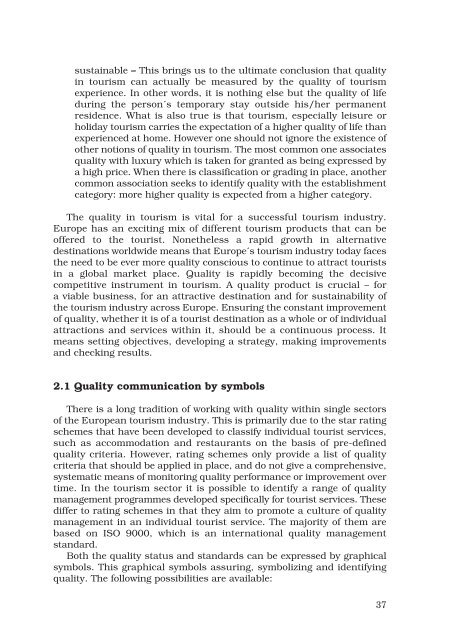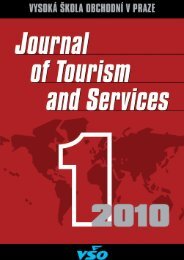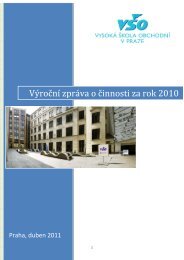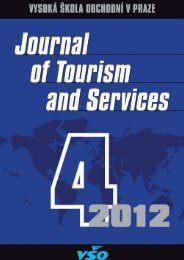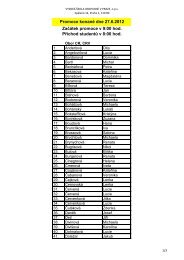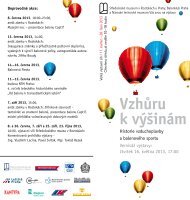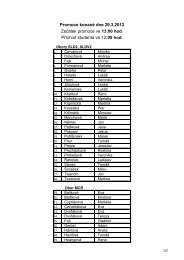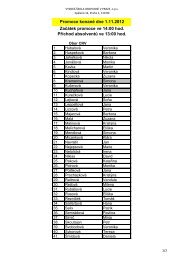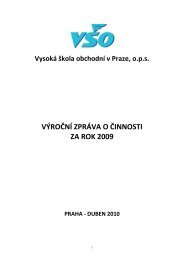Sestava 1 - Vysoká škola obchodnà v Praze
Sestava 1 - Vysoká škola obchodnà v Praze
Sestava 1 - Vysoká škola obchodnà v Praze
You also want an ePaper? Increase the reach of your titles
YUMPU automatically turns print PDFs into web optimized ePapers that Google loves.
sustainable – This brings us to the ultimate conclusion that quality<br />
in tourism can actually be measured by the quality of tourism<br />
experience. In other words, it is nothing else but the quality of life<br />
during the person´s temporary stay outside his/her permanent<br />
residence. What is also true is that tourism, especially leisure or<br />
holiday tourism carries the expectation of a higher quality of life than<br />
experienced at home. However one should not ignore the existence of<br />
other notions of quality in tourism. The most common one associates<br />
quality with luxury which is taken for granted as being expressed by<br />
a high price. When there is classification or grading in place, another<br />
common association seeks to identify quality with the establishment<br />
category: more higher quality is expected from a higher category.<br />
The quality in tourism is vital for a successful tourism industry.<br />
Europe has an exciting mix of different tourism products that can be<br />
offered to the tourist. Nonetheless a rapid growth in alternative<br />
destinations worldwide means that Europe´s tourism industry today faces<br />
the need to be ever more quality conscious to continue to attract tourists<br />
in a global market place. Quality is rapidly becoming the decisive<br />
competitive instrument in tourism. A quality product is crucial – for<br />
a viable business, for an attractive destination and for sustainability of<br />
the tourism industry across Europe. Ensuring the constant improvement<br />
of quality, whether it is of a tourist destination as a whole or of individual<br />
attractions and services within it, should be a continuous process. It<br />
means setting objectives, developing a strategy, making improvements<br />
and checking results.<br />
2.1 Quality communication by symbols<br />
There is a long tradition of working with quality within single sectors<br />
of the European tourism industry. This is primarily due to the star rating<br />
schemes that have been developed to classify individual tourist services,<br />
such as accommodation and restaurants on the basis of pre-defined<br />
quality criteria. However, rating schemes only provide a list of quality<br />
criteria that should be applied in place, and do not give a comprehensive,<br />
systematic means of monitoring quality performance or improvement over<br />
time. In the tourism sector it is possible to identify a range of quality<br />
management programmes developed specifically for tourist services. These<br />
differ to rating schemes in that they aim to promote a culture of quality<br />
management in an individual tourist service. The majority of them are<br />
based on ISO 9000, which is an international quality management<br />
standard.<br />
Both the quality status and standards can be expressed by graphical<br />
symbols. This graphical symbols assuring, symbolizing and identifying<br />
quality. The following possibilities are available:<br />
37


